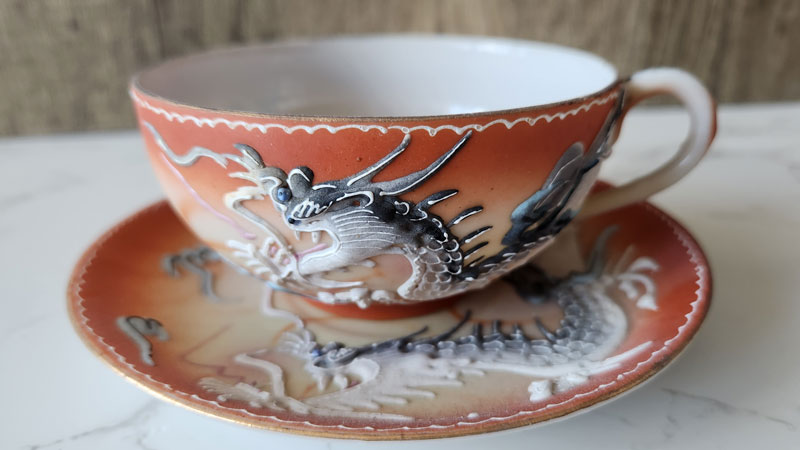On 10 February, the new Lunar New Year begins and we say goodbye to the Rabbit and welcome to the Year of the Dragon – with a cup of tea, of course.
Shennong is a well-known figure in tea mythology. His name literally translates to ‘Divine Farmer’ and his extensive CV – discoverer of tea, agriculture and medicine, and in his spare time inventor of the guqin – reads like a progenitor’s handbook. But did you know his father was a divine dragon?
In one myth, Shennong is born with a dragon’s head and a human face. Upon his birth, nine connected wells spontaneously appeared; if you drew water from one well, the surface of the others would ripple. This fits with the concept of eastern dragons being associated with water.
One of China’s most famous green teas is longjing, which translates to ‘dragon well’, named after a village in Zhejiang province. This well is connected to the West Lake and it is said that the water in it is denser than rainwater such that, after a storm, the rainwater swirls around the surface like a sinuous dragon. The tea is named after the village and is one of the best known tribute teas for the emperor.
The legend centres on the Qianlong Emperor, who visited West Lake on holiday and had a cup of tea at the Hu Gong Temple under Lion Peak Mountain. He enjoyed the tea so much he conferred imperial status on the 18 tea bushes in front of the temple. Today, the plants are still alive and are harvested according to a restricted schedule; their leaves are more valuable per gram than gold. True longjing is harvested from trees descended from those plants and grows around the Lion Peak and West Lake regions; there are, of course plenty of high grade longjing teas produced further afield and probably just as many fakes of varying quality.
Another dragon-related tea is oolong, from the Chinese wu long (black dragon), characterised by its semi-oxidised state and the step in production known as shaking, where the edges of the leaves are bruised a little, which contributes to its flavour and fragrance. Oolong is thus called because the unfurled shape of the leaves resembles that of a dragon. But it’s no fun without an origin story.
How about this one? One day a tea-picker named Wu was heading back from a day’s labour with his basket of freshly picked tea leaves. Now Wu was said to be a bit of a dreamer, so in one version of the tale he had a nap on the way back; in another, he sees a deer and gives chase. In any case, poor Wu is now late, so he bounds home only to find the leaves he picked are now semi-oxidised and a bit bruised from tumbling around in his basket.
Looking for the right tea to drink to celebrate the Year of the Dragon? Try these:
- Longjing (dragon well) green tea
- Dragon pearls, usually a rolled green tea scented with jasmine
- Xue long (snow dragon), a green tea with a white appearance or made from a white tea cultivar, usually from Yunnan or Fujian province; bai xue long is the white tea version
—and, of course, any oolong.
DID YOU KNOW? Oolong is a town in New South Wales. Apparently it’s an Aboriginal word meaning ‘swampy plain’, but the language group is unrecorded.
Reference: Handbook of Chinese Mythology by Lihui Yang and Deming An with Jessica Anderson Turner (Oxford University Press, 2005).
This article originally appeared in AUSTCS enews 6 February 2024.
